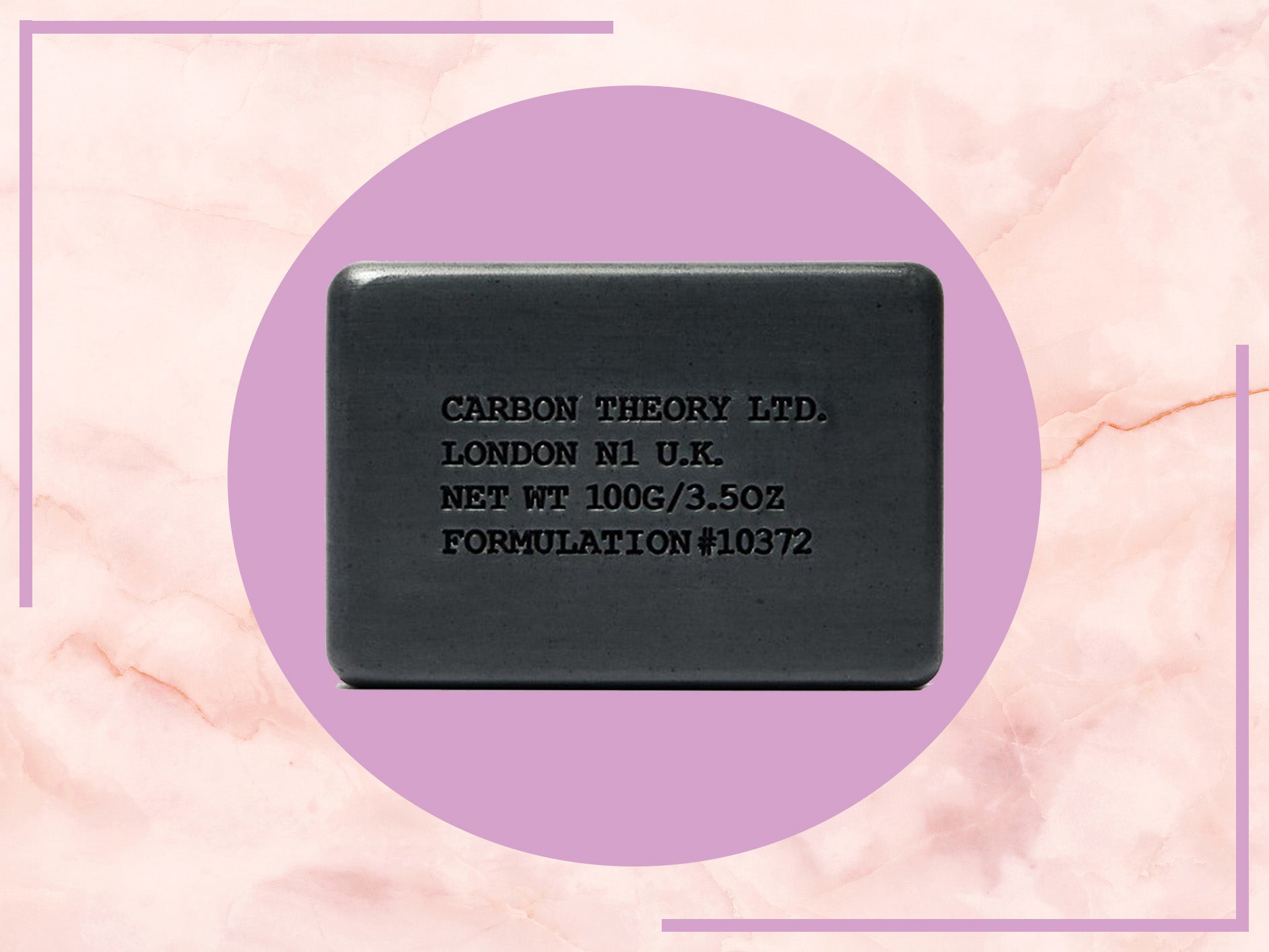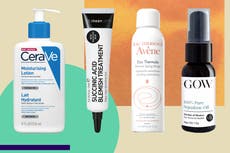The Independent's journalism is supported by our readers. When you purchase through links on our site, we may earn commission. Why trust us?
Does carbon theory soap actually work for oily skin? We put it to the test
This simple face wash may be your new skin care saviour

When I say I have oily skin, I don’t just mean I get a bit of dewiness towards the end of the day. I mean my skin is so oily that, if I let my meticulously structured skincare routine slip even slightly, my complexion will be so greasy that no make-up stands a chance of staying put longer than 20 minutes. It’s that kind of oily.
Of course, excessive shine isn’t the only downside to oily skin. Having smugly sailed through my teenage years with a clear complexion, adult acne hit me hard when I entered my twenties. While it petered out after a couple of years, I was left with stubborn scarring and hormonal spots on my jawline that like to reappear every few months, just to remind me that they can.
Read more: Best organic body washes that are kinder to your skin
There are a lot of skincare products out there that promise to treat my skin type. Some claim to totally mattify skin, while others go a step further and try to mattify it just enough to leave you with the right amount of glow. Both promises usually fall flat. These type of products can be harsh and just create another problem, and they also tend to cause congestion in my T-Zone.
By now I’ve put together a mental list of ingredients that work best. Salicylic acid, hyaluronic acid, retinol and niacinamide are capable of skincare magic, but finding the right dosage and layering products correctly is a science in and of itself. Natural ingredients like clay, charcoal and tea tree oil are all also very effective, especially in cleanser form.
But while I’ve long since established the moisturisers and serums that my skin can and cannot tolerate, cleansers are trickier to nail down. Theoretically, this should be the product leading the fight against my oily skin. I’ve found plenty of average cleansers, but none that have wowed me. So when I heard about a cleanser dermatologically proven to dive deep into problematic skin and treat it at its source I was hopeful but set the bar low. It might have had rave reviews, but I’ve been stung before.
Lo and behold, this £6 wonder turned out to be a game-changer. Simple, affordable and effective, read on to find out why this might just be the first cleanser to join my ranks of holy grail skincare.
You can trust our independent reviews. We may earn commission from some of the retailers, but we never allow this to influence selections, which are formed from real-world testing and expert advice. This revenue helps to fund journalism across The Independent.
Carbon Theory facial cleansing bar: £6, Carbon Theory – Buy now

Formulated and made in the UK, every product in Carbon Theory’s line of vegan, cruelty-free skincare relies on organic tea tree oil. While it sounds like the last thing you’d want to add to an oily complexion, tea tree oil actually serves as a natural antiseptic which helps deeply cleanse skin and purify your pores. In this cleanser, it’s paired with activated charcoal, which is known to gently draw out bacteria, toxins and excess oil. In short, a winning combination for oily skin, typical of the brand’s promise to deliver results-driven skincare solutions.
And yet I was still sceptical. Far from the luxurious foaming formulas or minimalist, clinical-looking of the other popular cleansers I’ve tried, this is a cleansing bar. It looks very rustic and after years spent blanching at the idea of using soap on my face, it seemed like I was asking for trouble. My first application did not go well. Diving in without reading the instructions, I wet the bar under the tap and applied it directly to my skin. It didn’t lather well and felt a bit like rubbing a small brick over my face, not like I was deep-cleansing my pores.
The second use was much more successful. Instead of rubbing it on my face (which, beyond practical reasons, was just plain stupid as it just increased the risk of cross-contamination), I ran it under warm water and rubbed the bar until it lathered. I then massaged this product into wet skin, leaving it for 30 seconds before rinsing. This time my skin felt fresh and thoroughly cleaned. My main concern with the combination of tea tree and charcoal was that together they’d be too harsh. However, as they’re balanced out by shea butter, skin actually felt softer afterwards than it did at the start.
From then on, I used this product both morning and night. While I did experience some purging along my jawline, this didn’t put me off; I’ve often found that the products I love most purge the most problematic areas of my skin at first before evening out. This phase only lasted three days, and then the results started. Not only did my hormonal flare-ups grind to a halt, but texture from my old scarring started to even out and the worst of my hyperpigmentation began to fade after just 10 days.
Reversing acne scars is a long journey, but it’s off to a very good start. The most noticeable difference has been the oiliness. I have just the right amount of glow, no longer have to blot my skin midday and my makeup sits better on my forehead and nose than it has in years. There may come a time when it’s too drying to use more than once a day but, for now, it’s working miracles.
Read more skincare saviours check out of guide to best SPF moisturisers, protective formulas for every skin type



